From ammonia to phosphorus, the HI83224 benchtop photometer measures 15 measurement methods for different key water quality parameters in addition to chemical oxygen demand (COD) in 3 different ranges. The HI83224 features a barcode reader that can be used for barcoded sample vials. The reader scans each vial and automatically identifies the method and range, eliminating potential errors and simplifying the testing process.
This photometer features an advanced optical system that uses special tungsten lamps, narrow band interference filters, and silicon photodetectors to ensure accurate photometric readings every time. The HI83224 uses a graphic backlit LCD that allows for an intuitive user interface, offering a tutorial mode that gives a step-by-step procedure for performing a measurement. The result obtained can be displayed in various chemical forms based on the user’s preference. For tracking of data, results can be logged and then exported to a Windows® compatible PC using the HI92000 software and HI920013 USB cable.
Features at-a-glance
Barcode Recognition – Automatic recognition of bar coded samples is an exciting feature of the HI83224. This advanced meter scans each vial inserted into the vial holder and automatically identifies the sample method and range. The barcode has four digits: the first two digits are for parameter identification and the second two digits are for reagent lot ID. Vials for different methods can be distinguished by a barcode printed on the vial and the cap color – the barcodes for different methods are shown in the table below. For parameters that don’t use a barcoded reagent, the vials supplied with the instrument can be used.
Vial Rotation – During the measurement phase of the analysis, the state-of-the-art vial rotator spins the vial to identify the method via the barcode, then rotates while taking a number of absorbance readings. The instrument then converts the readings to concentration units and displays the result on the easy to read screen.
Improved Accuracy – Using the “average” function further improves reading accuracy. When enabled in the setup menu, the instrument takes 180 absorbance readings through the vial as it rotates. Each individual reading represents a measurement through a new optical path. Averaging the absorbance readings minimizes errors due to vial inconsistencies.
Method Verification – A dedicated METHOD CHECK button is available to quickly verify the vial barcode, eliminating the potential for vial confusion or incorrect sample readings.
Backlit Graphic LCD Display – The HI83224 features an adjustable backlit graphic display with virtual keys and on-screen help to provide for an intuitive user interface.
Data Logging – Users can store up to 200 readings by simply pressing the LOG key. Logged readings are just as easily recalled by pressing the dedicated RCL button. Stored data includes parameter, test results, sample number, lot number, instrument ID, date and time.
PC Connectivity – Logged readings can be quickly and easily transferred to a PC via USB using the HI92000 Windows® compatible software.
Result Conversion – Eliminates confusion by automatically converting readings to other chemical forms. Common conversions are available at the touch of a button.
On-screen Tutorial – With the tutorial function enabled, short guides relating to the current operation are displayed. At any stage in the setup or measurement process, the dedicated HELP button is also available to show contextual help.
Built-in Timer – Display of time remaining before a measurement is taken. Ensures that all readings are taken at the appropriate reaction intervals for the test being performed.
Error Messages – Messages on display alerting to problems including barcode error, wrong vial, and different reagent lot.
Cooling Lamp Indicator – To maintain the desirable wavelength to be used for absorbance, it is necessary to ensure components are not overheated from the heat generated by the tungsten lamp. Each photometer is designed to allow a minimal amount of time for components to cool. The cooling lamp indicator is displayed prior to a reading being taken.
Units of Measure – Appropriate unit of measure is displayed along with reading.
On-screen Features
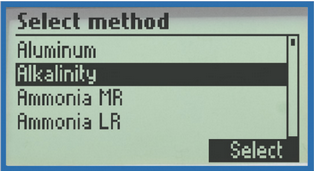
Method Selection
Users can easily select any one of the 15 measurement methods via the dedicated METHOD button.

Data Logging
Up to 200 measurement readings can be logged and recalled for future use.
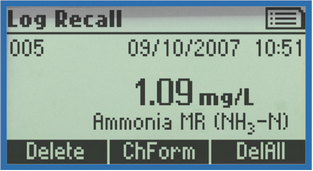
Log Recall
Logged data can easily be recalled and the chemical form can be converted at the touch of a button.
Advanced Optical System
The HI83224 features 15 different methods that can be measured using ready-made liquid or powder reagents. When the appropriate reagent is used for a selected method, the reaction between the reagent and the sample causes a color change; the greater the concentration, the deeper the color. The associated color change is then colorimetrically analyzed according to the Beer-Lambert Law. This principle states that light is absorbed by a complementary color, and the emitted radiation is dependent upon concentration. A narrow band interference filter allows the relevant wavelength of light to be detected by the silicon photodetector and omits all other visible light emitted from the tungsten lamp. As the change in color of the reacted sample increases, absorbance of the specific wavelength of light also increases, while transmittance decreases.
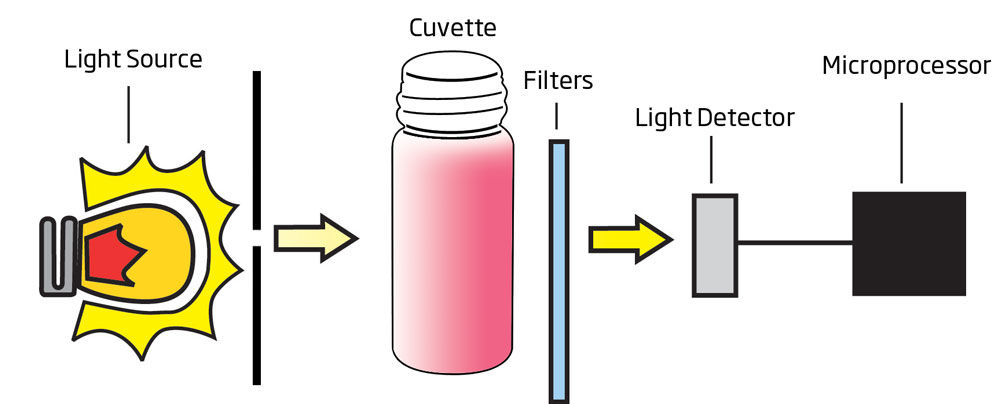
| Part Code |
Method |
Vial Barcode |
| HI94764A-25 |
Ammonia LR |
01xx |
| HI94764B-25 |
Ammonia HR |
02xx |
| HI93701-01 |
Chlorine, Free |
– |
| HI93711-01 |
Chlorine, Total |
– |
| HI94766-50 |
Nitrate |
05xx |
| HI94767A-50 |
Nitrogen, Total LR |
16xx; 06xx |
| HI94767B-50 |
Nitrogen, Total HR |
17xx; 07xx |
| HI94754A-25 |
Oxygen Demand, Chemical (COD) LR |
12xx |
| HI94754B-25 |
Oxygen Demand, Chemical (COD) MR |
13xx |
| HI94754C-25 |
Oxygen Demand, Chemical (COD) HR |
24xx |
| HI94758A-50 |
Phosphorus, Reactive |
30xx |
| HI94758B-50 |
Phosphorus, Acid Hydrolyzable |
31xx |
| HI94758C-50 |
Phosphorus, Total |
32xx |
| HI94763A-50 |
Phosphorus, Reactive HR |
33xx |
| HI94763B-50 |
Phosphorus HR |
34xx |
Note: xx represents the reagent lot code.
*Not a Gnelf
⣿⣿⣿⣿⣿⠟⠉⠁⠄⠄⠄⠈⠙⠿⣿⣿⣿⣿⣿⣿⣿⣿⣿⣿
⣿⣿⣿⣿⠏⠄⠄⠄⠄⠄⠄⠄⠄⠄⠸⢿⣿⣿⣿⣿⣿⣿⣿⣿
⣿⣿⣿⣏⠄⡠⡤⡤⡤⡤⡤⡤⡠⡤⡤⣸⣿⣿⣿⣿⣿⣿⣿⣿
⣿⣿⣿⣗⢝⢮⢯⡺⣕⢡⡑⡕⡍⣘⢮⢿⣿⣿⣿⣿⣿⣿⣿⣿
⣿⣿⣿⣿⡧⣝⢮⡪⡪⡪⡎⡎⡮⡲⣱⣻⣿⣿⣿⣿⣿⣿⣿⣿
⣿⣿⣿⠟⠁⢸⡳⡽⣝⢝⢌⢣⢃⡯⣗⢿⣿⣿⣿⣿⣿⣿⣿⣿
⣿⠟⠁⠄⠄⠄⠹⡽⣺⢽⢽⢵⣻⢮⢯⠟⠿⠿⢿⣿⣿⣿⣿⣿
⡟⢀⠄⠄⠄⠄⠄⠙⠽⠽⡽⣽⣺⢽⠝⠄⠄⢰⢸⢝⠽⣙⢝⢿
⡄⢸⢹⢸⢱⢘⠄⠄⠄⠄⠄⠈⠄⠄⠄⣀⠄⠄⣵⣧⣫⣶⣜⣾
⣧⣬⣺⠸⡒⠬⡨⠄⠄⠄⠄⠄⠄⠄⣰⣿⣿⣿⣿⣿⣷⣽⣿⣿
⣿⣿⣿⣷⠡⠑⠂⠄⠄⠄⠄⠄⠄⠄⣿⣿⣿⣿⣿⣿⣿⣿⣿⣿
⣿⣿⣿⣿⣄⠠⢀⢀⢀⡀⡀⠠⢀⢲⣿⣿⣿⣿⣿⣿⣿⣿⣿⣿
⣿⣿⣿⣿⣿⢐⢀⠂⢄⠇⠠⠈⠄⣿⣿⣿⣿⣿⣿⣿⣿⣿⣿⣿
⣿⣿⣿⣿⣧⠄⠠⠈⢈⡄⠄⢁⢀⣾⣿⣿⣿⣿⣿⣿⣿⣿⣿⣿
⣿⣿⣿⣿⣿⡀⠠⠐⣼⠇⠄⡀⠸⣿⣿⣿⣿⣿⣿⣿⣿⣿⣿⣿
⣿⣿⣿⣿⣯⠄⠄⡀⠈⠂⣀⠄⢀⠄⠈⣿⣿⣿⣿⣿⣿⣿⣿⣿
⣿⣿⣿⣿⣿⣶⣄⣀⠐⢀⣸⣷⣶⣶⣶⣿⣿⣿⣿⣿⣿⣿⣿⣿
Parameters
Reagents are available in liquid or powder form, and the amount of each reagent is precisely dosed to ensure maximum repeatability.
| Parameter |
Range |
Resolution |
Accuracy |
Method |
Reagent Code |
| COD LR |
0 to 150 mg/L |
1 mg/L |
±5 mg/L ±5% of reading |
dichromate EPAǂ
dichromate mercury-free◊◊
dichromate ISO◊ |
HI94754A-25
HI94754D-25
HI94754F-25 |
| COD MR |
0 to 1500 mg/L |
1 mg/L |
±15 mg/L ±4% of reading |
dichromate EPAǂ
dichromate mercury-free◊◊
dichromate ISO◊ |
HI94754B-25
HI94754E-25
HI94754G-25 |
| COD HR |
0 to 15000 mg/L |
10 mg/L |
±150 mg/L ±3% of reading |
dichromate |
HI94754C-25 |
Method with chromium-sulfuric acid is officially recognized by EPA for wastewater analysis.
- The HI94754F-25 and HI94754G-25 method follows the official method ISO 15705.
- This method is recommended for general purpose analysis with no chloride interference.
| Parameter |
Range |
Resolution |
Accuracy* |
Method |
Reagent Code |
| Ammonia LR |
0.00 to 3.00 mg/L (ppm) as
NH3-N |
0.01 mg/L |
±0.10 mg/L ±5% of reading |
Nessler |
HI94764A-25 (25 tests) |
| Ammonia HR |
0 to 100 mg/L (ppm) as NH3-N |
1 mg/L |
±1 mg/L ±5% of reading |
Nessler |
HI94764B-25 (25 tests) |
| Chlorine, ** Free |
0.00 to 5.00 mg/L (ppm) |
0.01 mg/L below 0.99 mg/L; 0.1 mg/L above 0.99 mg/L |
±0.03 mg/L ±4% of reading |
DPD |
HI93701-01 (100 tests)
HI93701-03 (300 tests) |
| Chlorine, ** Total |
0.00 to 5.00 mg/L (ppm) |
0.01 mg/L below 0.99 mg/L; 0.1 mg/L above 0.99 mg/L |
±0.03 mg/L ±4% of reading |
DPD |
HI93711-01 (100 tests)
HI93711-03 (300 tests) |
| Nitrate |
0.0 to 30.0 mg/L (ppm) as NO3-N |
0.1 mg/L |
±1.0 mg/L ±5% of reading @ 20°C |
chromotropic acid |
HI94766-50 (50 tests) |
| Nitrogen, Total LR |
0.0 to 25.0 mg/L (ppm) |
0.1 mg/L |
±1.0 mg/L ±5% of reading @ 20°C |
chromotropic acid |
HI94767A-50 (50 tests) |
| Nitrogen, Total HR |
10 to 150 mg/L (ppm) as N |
1 mg/L |
±3 mg/L ±4% of reading |
chromotropic acid |
HI94767B-50 (50 tests) |
| Phosphorus, Acid Hydrolyzable |
0.00 to 1.60 mg/L (ppm) as P |
0.01 mg/L |
±0.05 mg/L ±5% of reading |
ascorbic acid |
HI94758B-50 (50 tests) |
| Phosphorus, Reactive |
0.00 to 1.60 mg/L (ppm) as P |
0.01 mg/L |
±0.05 mg/L ±5% of reading |
ascorbic acid |
HI94758A-50 (50 tests) |
| Phosphorus, Reactive HR |
0.0 to 32.6 mg/L (ppm) as P |
0.1 mg/L |
±0.5 mg/L ±5% of reading |
vanadomolybdophosphoric acid |
HI94763A-50 (50 tests) |
| Phosphorus, Total |
0.00 to 1.15 mg/L (ppm) as P |
0.01 mg/L |
±0.05 mg/L ±6% of reading |
ascorbic acid |
HI94758C-50 (50 tests) |
| Phosphorus, Total HR |
0.0 to 32.6 mg/L (ppm) |
0.1 mg/L |
±0.5 mg/L ±5% of reading |
vanadomolybdophosphoric acid |
HI94763B-50 (50 tests) |
* @25℃ (77℉) unless otherwise stated
** For chlorine, liquid reagents are available.
HI83224 is supplied with sample vials and caps (10), vial cleaning cloths (4), scissors, and instruction manual.
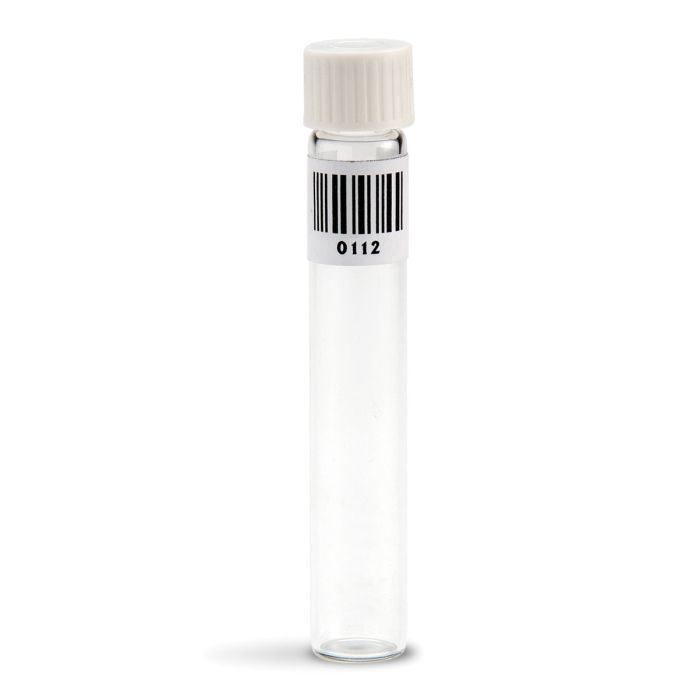
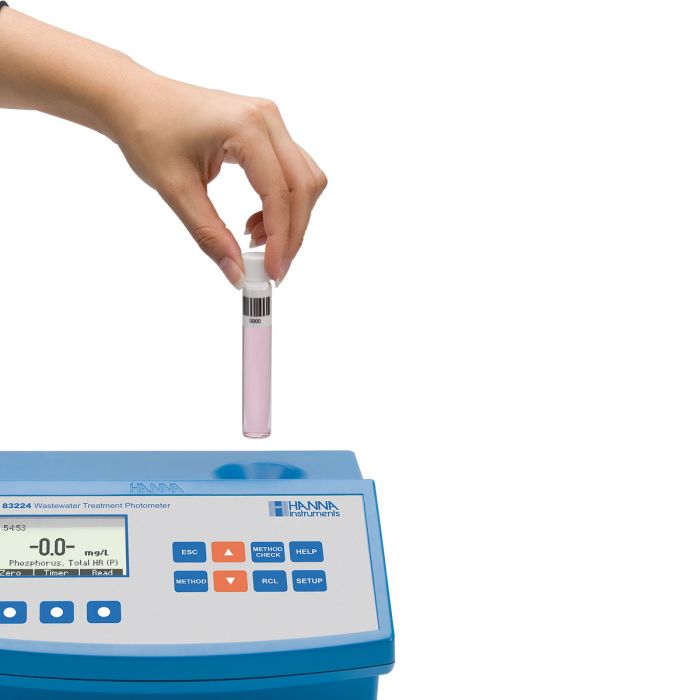
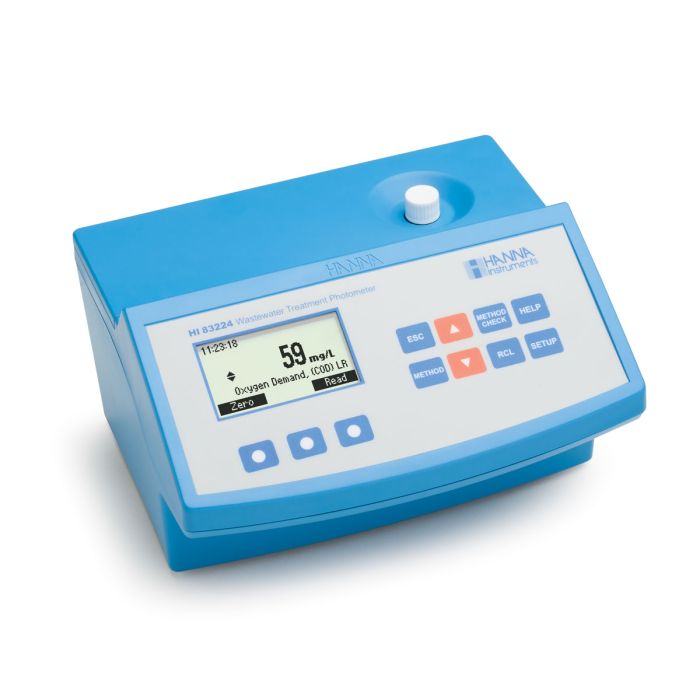






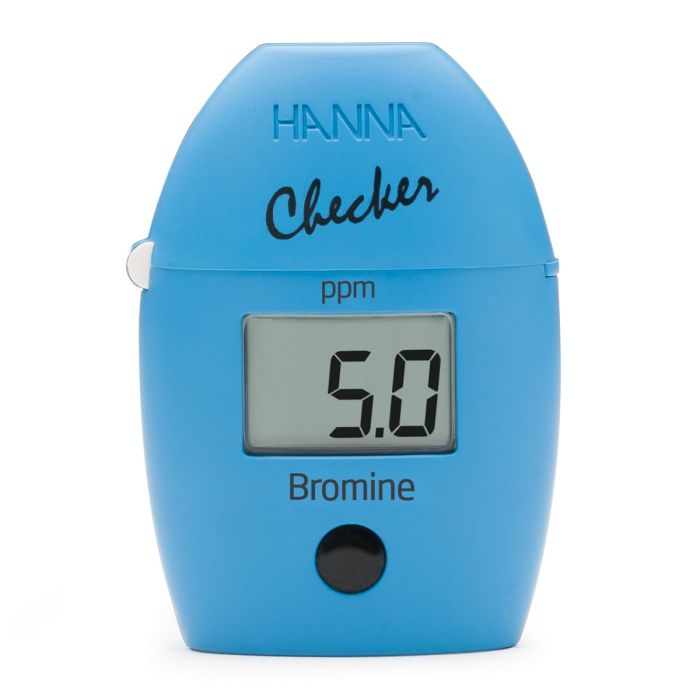

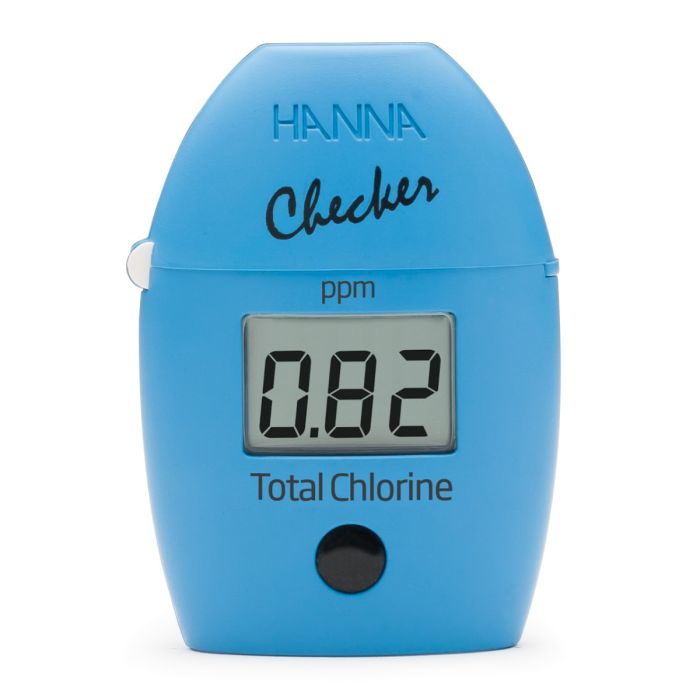
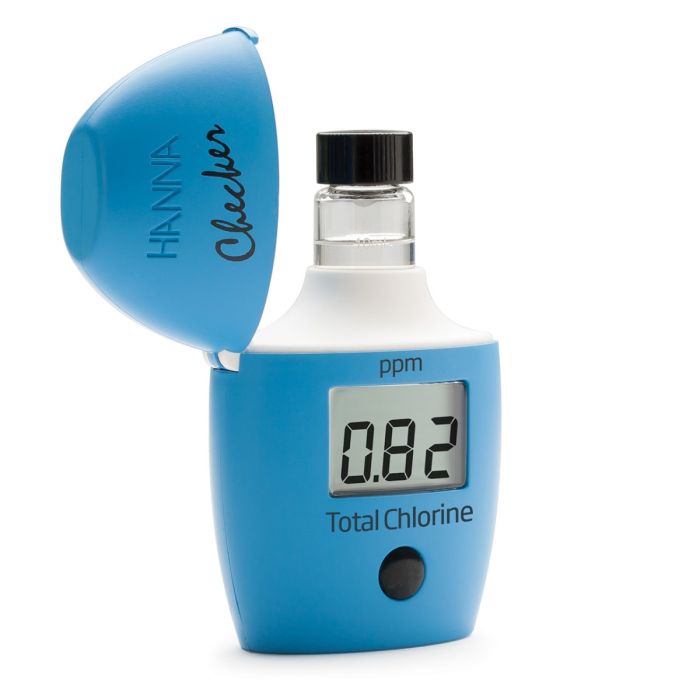
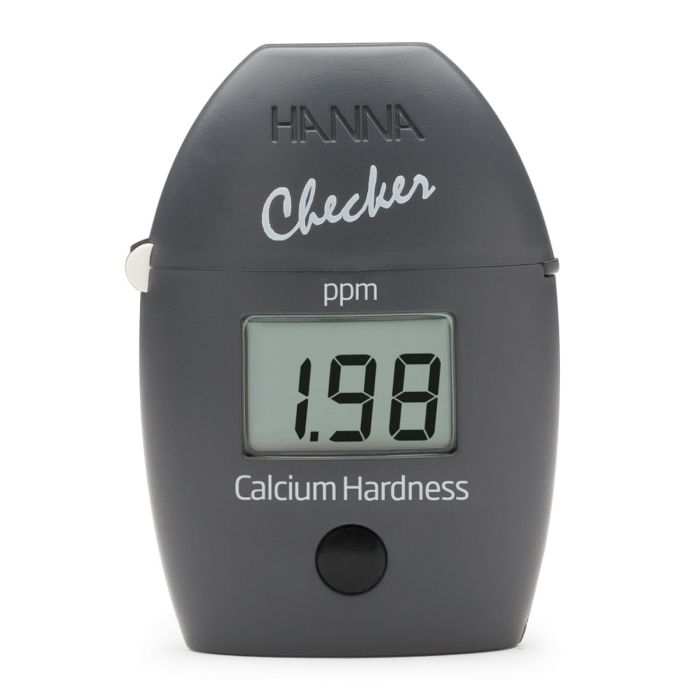
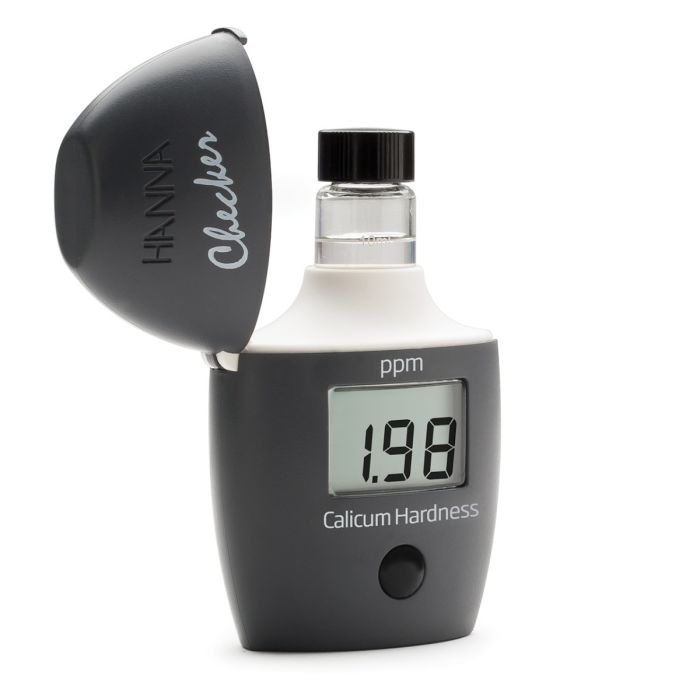
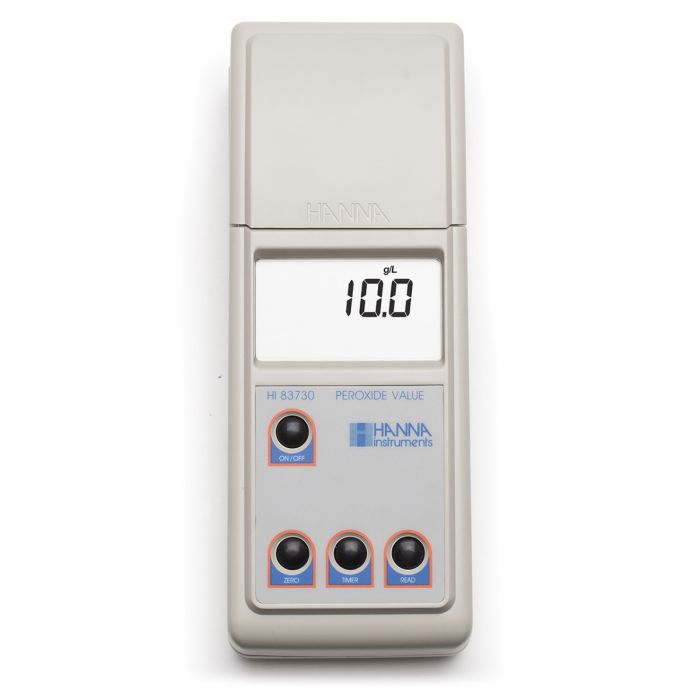
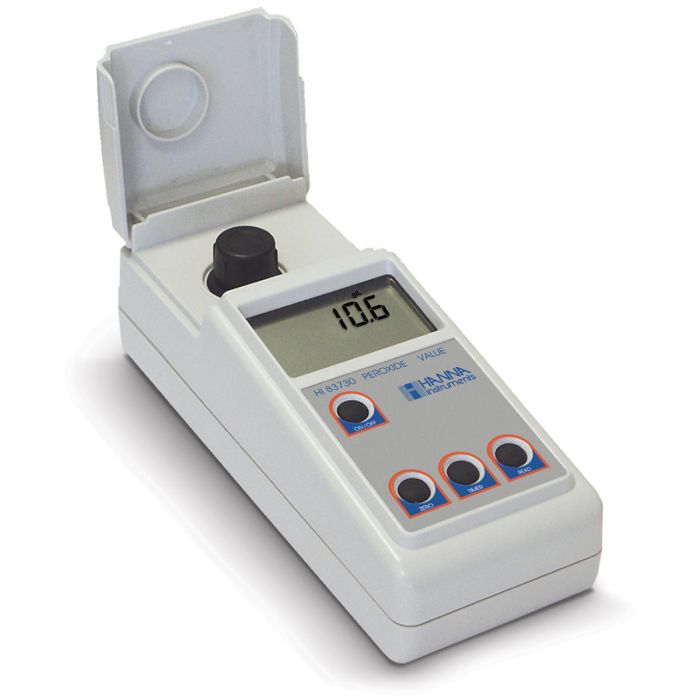


Reviews
There are no reviews yet.